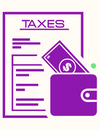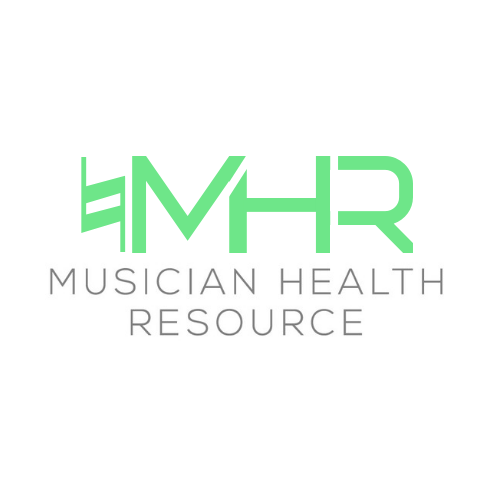
I wrote a previous blog post covering the passing of the CARES Act and what that means for musicians and unemployment which you can read here. For updates on the enactment of the legislation, continue below.
If you are a freelancer or self employed individual you have no doubt by now heard that the Federal Government passed the CARES Act in late March which extends unemployment benefits to those who don't traditionally qualify. It is important to note that the federal government is who passed this act because it is the state governments who are in charge of distributing unemployment.
That means that the Department of the Treasury, the US Department of Labor and each state's Department of Labor and Unemployment have to be on the same page regarding the requirements they deem necessary for awarding unemployment benefits via an entirely new program. A program which they must create from scratch and implement and then accommodate millions of people through. Don't expect it to happen fast.
More than 16 million people in the United States have lost their jobs and an additional 6 million people filed for unemployment insurance (UI) benefits last week alone. And that's without freelancers and self-employed individuals. Those 6 million are applying for their state's usual UI benefits as they are currently determined by each state individually.
In California the unemployment maximum awarded by the state is $450 a week. This is what a usual employee with a W2 income and tax return who is now unemployed can file for. If the state decides you were not making enough money prior to being unemployed to qualify for the full $450, they could award you $350 a week since the amount paid is determined as a percentage of the amount made.
The $600 is an additional unemployment amount to you from the Federal Government. It has nothing to do with what the States determine you are eligible for.
Both amounts are retroactive. If you were unemployed on April 1, then the amounts will be awarded to you from this date even if your filing is not accepted until April 18. The $600 is only retroactive after the passing of the CARES Act, March 29, and will end on July 31.
If you have a W2 income, you can start applying for your states unemployment now and the $600 will be credited and added into your amount whenever the State receives the funds and the ability from the Federal Government.
If you don't have a W2 income, your system for applying for UI benefits doesn't yet exist!
Those benefits will eventually be UI for up to 50% of your state's current maximum. (If you're in California, that's half of $450 for a maximum of $225 a week.) PLUS you still get the $600. And good news, even though the system doesn't yet exist, the benefits will continue to be retroactive back to March 29, after the CARES Act was signed into law and the $600 and unemployment benefits for freelancers and self employed individuals were granted.
Here's what we suspect currently that you will need as a self employed individual:
- 2018 and/or 2019 tax returns to prove your income history and filing status with the IRS. This should look like a Schedule C and/or a Schedule SE.
- Potentially 18 months of income history via 1099 forms. Since W2 workers have to provide more than a year of income proof, 1099 workers probably will have to as well.
- You may be asked to provide bank statements or other proof of income.
My advice is that if you are hoping to apply for these UI benefits whenever they become available, that you get your paperwork in order now. One time in my career I filed for unemployment since I had been working on a union show that was on summer hiatus. I had to provide evidence of each of my W2's that I had collected over that season as well as all my documented income history. It was a headache and that was with around ten forms in eighteen months.
For my 2019 taxes alone I had close to fifteen 1099 forms on my personal Schedule C. Then I had a Schedule C for my DBA and a Schedule SE for my self employed income. Add to that my six W2s and any eligible 2018 forms and taxes and it's going to take a while to get everything to be ordered. The more you have over-prepared now, the more likely you are to get into the system quickly when it exists.
Some states, like Vermont, are saying they hope to have self employed and freelancer benefit systems up as early as next week. Vermont is currently processing over 60,000 UI claims. Larger states, like California, are currently processing just under one million claims from last week alone. Different states will implement their systems at different times.
States are also worried that if they mistakenly approve someone, they will be stuck with the bill. Employment works because workers, via the companies they work for, pay into the unemployment benefits so that they are available when needed. Gig economy, freelance workers and self employed individuals, don't pay into unemployment benefits. That means that if they apply and slip through the system as it currently stands, the state is left paying the amount that the Federal Government has promised to pay. In short, wait for the proper application to be set up or risk being denied.
On your states unemployment website you may see options for freelancer unemployment benefits. This is likely Disaster Unemployment Assistance (DUA) and it is not available in every state. This has nothing to do with the benefits being granted to you by the Federal Government via the CARES Act and is paid out at the state's discretion. Because there hasn't been any information released yet regarding the CARES Act UI benefits on the state level, there is no information yet regarding if you will have to file a new claim to receive the extended benefits offered to you as a freelancer via the new law.
If you receive DUA, it will be for the typical allotted amount of time; 26 weeks maximum. The new UI benefits under the CARES Act, last for a period of 39 weeks via the federal extension. I can't tell how soon you need to have money in your pocket, how long it will take to file claims via the online systems or how much of a headache you want to endure wading through the filing process. If you can wait until the information is released, whenever that is, then you know you'll only have to file once and you will receive retroactive benefits.
I wrote a post yesterday on what the economic stimulus check entails. My strong suggestion for freelancers, and what I am personally doing, is counting on the stimulus check coming before I file my unemployment. I will be honest that because my school year teaching job is continuing to pay me and because I have a healthy emergency fund, I am not feeling the pressure yet of my income being below my means. With the knowledge that UI benefits are retroactive, I will apply for them when the information and application system becomes fully available and will count on the stimulus check bolstering my bank account should it arrive within the next month.
However, we don't know when the stimulus check will arrive. We do know that if you have a bank account on file with the IRS from filing and paying (or getting refunds) for your taxes, then you will likely receive your check earlier. Checks are supposed to roll out as early as next week. Contrast this with the bolstered $600 additional UI benefits which are hoped to begin distribution this week in places like New York, due to it being the epicenter of the US outbreak and states like Missouri, which have smaller amounts of claims being filed.
In short, it is your call on if you want to apply for DUA if it is available. If your state doesn't yet have self employment UI benefits listed, don't apply yet. Consider checking these funds for alternative emergency income sources.
I am coming out with a series on taxes next week to help you get set up for the stimulus check and UI benefits. Sign up for the mailing list for updates or send me an email with questions you'd like answered. This post was a direct result of questions I've received from you.
Be well and continue to strive for a life of less pain and more music!







